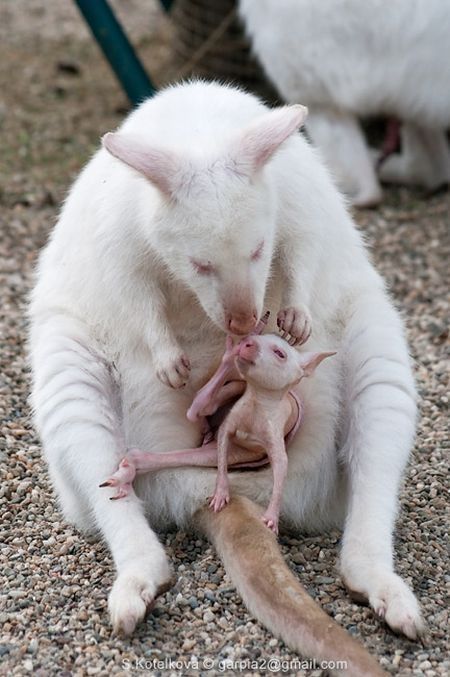|
|
Mother And Baby White Kangaroo
|
Along with dingos, introduced species such as foxes, feral cats, and both domestic and feral dogs, pose a threat to kangaroo populations. Kangaroos and wallabies are adept swimmers, and often flee into waterways if presented with the option. If pursued into the water, a large kangaroo may use its forepaws to hold the predator underwater so as to drown it. Another defensive tactic described by witnesses is catching the attacking dog with the forepaws and disembowelling it with the hind legs.
• Adaptations
Kangaroos have developed a number of adaptations to a dry, infertile country and highly variable climate. As with all marsupials, the young are born at a very early stage of development—after a gestation of 31–36 days. At this stage, only the forelimbs are somewhat developed, to allow the newborn to climb to the pouch and attach to a teat. In comparison, a human embryo at a similar stage of development would be about seven weeks old, and premature babies born at less than 23 weeks are usually not mature enough to survive. When the joey is born, it is about the size of a lima bean. The joey will usually stay in the pouch for about nine months (180–320 days for the Western Grey) before starting to leave the pouch for small periods of time. It is usually fed by its mother until reaching 18 months.
The female kangaroo is usually pregnant in permanence, except on the day she gives birth; however, she has the ability to freeze the development of an embryo until the previous joey is able to leave the pouch. This is known as diapause, and will occur in times of drought and in areas with poor food sources. The composition of the milk produced by the mother varies according to the needs of the joey. In addition, the mother is able to produce two different kinds of milk simultaneously for the newborn and the older joey still in the pouch.
|
|









